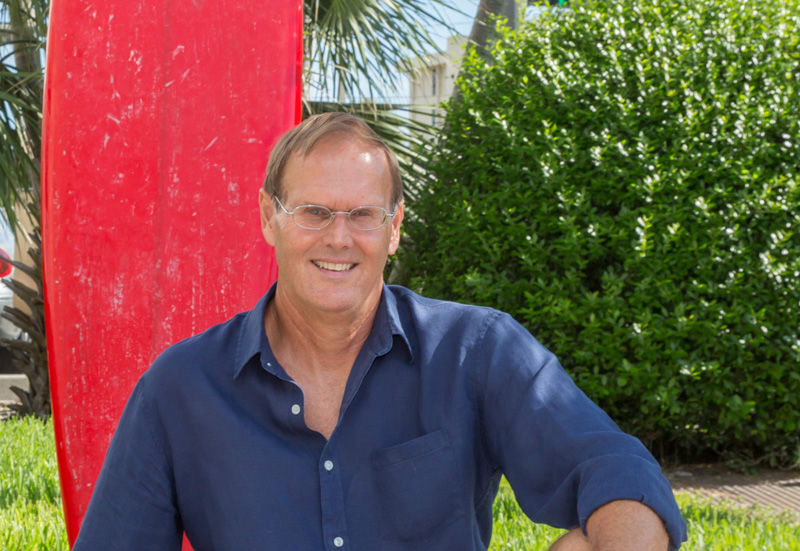July 28 has come and gone and if you didn’t realize that particular Thursday was “World Hepatitis Day,” you’re not alone.
Hepatitis has not merely been flying under the national radar for years, at times it appears to have gone completely subterranean.
Though it is often nearly invisible to the public eye, the fact remains that hepatitis C will claim over 500,000 lives worldwide this year and upwards of 15,000 of those will be right here in the United States.
There are multiple hepatitis viruses, including hepatitis A (HAV); hepatitis B (HBV); hepatitis C (HCV); hepatitis D (HDV); and hepatitis E (HEV).
All types of hepatitis target the body’s largest organ, the liver, but safe and effective vaccines exist for all the above except Hepatitis C.
HCV is an insidious killer. Like a crocodile in the water, it can lay seemingly dormant for long periods before suddenly attacking its victims.
That’s exactly what happened to 58-year-old Vero resident Jack Poling. A filmmaker and avid surfer, Poling very nearly lost his life to HCV.
The state of Florida has one of the highest rates of HCV infection in the country and, according to the Centers for Disease Control and Prevention, baby boomers like Poling – born between 1945 and 1965 – are most at risk.
The Centers for Disease Control says the hepatitis C virus can lay dormant within the body for decades but when it strikes, it can quickly lead to serious, life-threatening liver problems, including cirrhosis, liver cancer, lymphoma and more.
The CDC estimates that between 3 million and 4 million people in the United States have chronic HCV and that 75 percent to 85 percent of those exposed to the virus will develop a chronic infection.
For Poling, it all started with a ruptured spleen suffered during a high school football game back in 1972, which led to surgery and a transfusion that introduced HCV into his body.
It may seem shocking today, but it wasn’t until 1990 that tests for screening blood supplies for HCV were introduced.
(For decades the spread of HCV was blamed primarily on intravenous drug use, shared needles, body piercings, tattoos and such, but it turns out transfusions and organ transplants prior to 1990 accounted for far more cases.)
In any event, Poling, who, along with his brother, runs a film and production company here in Vero, would go on to experience dire consequences from the infection.
In 2007, Winter Park oncologist Dr. Lee Zehngebot, who was treating Poling for non-Hodgkin’s lymphoma, told him there is a compelling connection between HCV and lymphoma.
According to the National Cancer Institute, “HCV infection increases the risk of developing non-Hodgkin’s lymphoma by 20 percent to 30 percent.”
So while the blond, blue-eyed Poling had to deal with chemotherapy treatments for his lymphoma, he also turned to Vero Beach’s Dr. Charles Eberhart and Dr. Susan Murphy to help deal with the HCV.
It was a long and thoroughly draining experience, according to Poling.
At that time, the drug treatment most frequently prescribed for HCV was interferon injections. Those injections have significant side effects including constant flu-like symptoms, anemia, depression and insomnia. Poling faced all the above until he was finally approved for a drug called Harvoni that is made by Gilead Sciences.
But getting that approval wasn’t easy.
Poling relates that Dr. Eberhart prescribed Harvoni but his insurance company refused to pay for the life-saving drug.
“I appealed and they denied it again,” says Poling. “Three times I was denied. I was getting depressed. All my symptoms started really hitting.
“I was going down fast. My liver was failing. I’m thinking, I’m screwed.”
Fortunately for Poling, he was finally able to get the drug through Gilead’s Support Path program.
Normally, Harvoni carries a retail price of $1,125 per pill and the standard dosage is one pill a day for 12 weeks, adding up to approximately $100,000 for a course of treatment.
Poling experienced a sea change in his symptoms after beginning Harvoni.
“Compared to Interferon, [taking Harvoni] is a cakewalk,” states the obviously relieved Poling. “Every day I feel better than the day before.”
With the drug, he is back at work and he and his brother are now finishing up work on a film that Poling says “focuses on the history of the Sebastian Inlet and the surfers who emanated from this area.”
And while HCV continues to fly under the national radar, on June 28 of this year, Gilead garnered FDA approval for Epclusa, an even newer Hepatitis drug.
According to Gilead, Epclusa is the first drug to treat all major forms of HCV.
The website for the Support Path for Gilead’s Harvoni and Sovaldi drugs for Hepatitis C patients is at: http://www.gilead.com/responsibility/us-patient-access/support%20path%20for%20sovaldi%20and%20harvoni.

